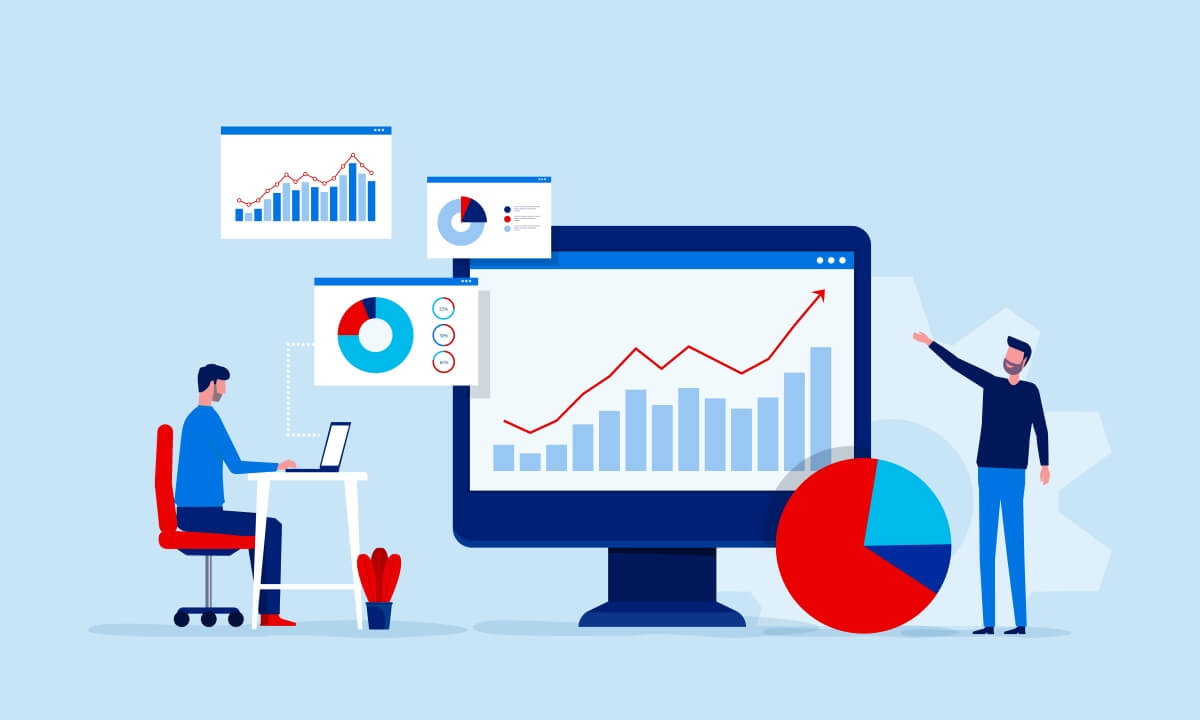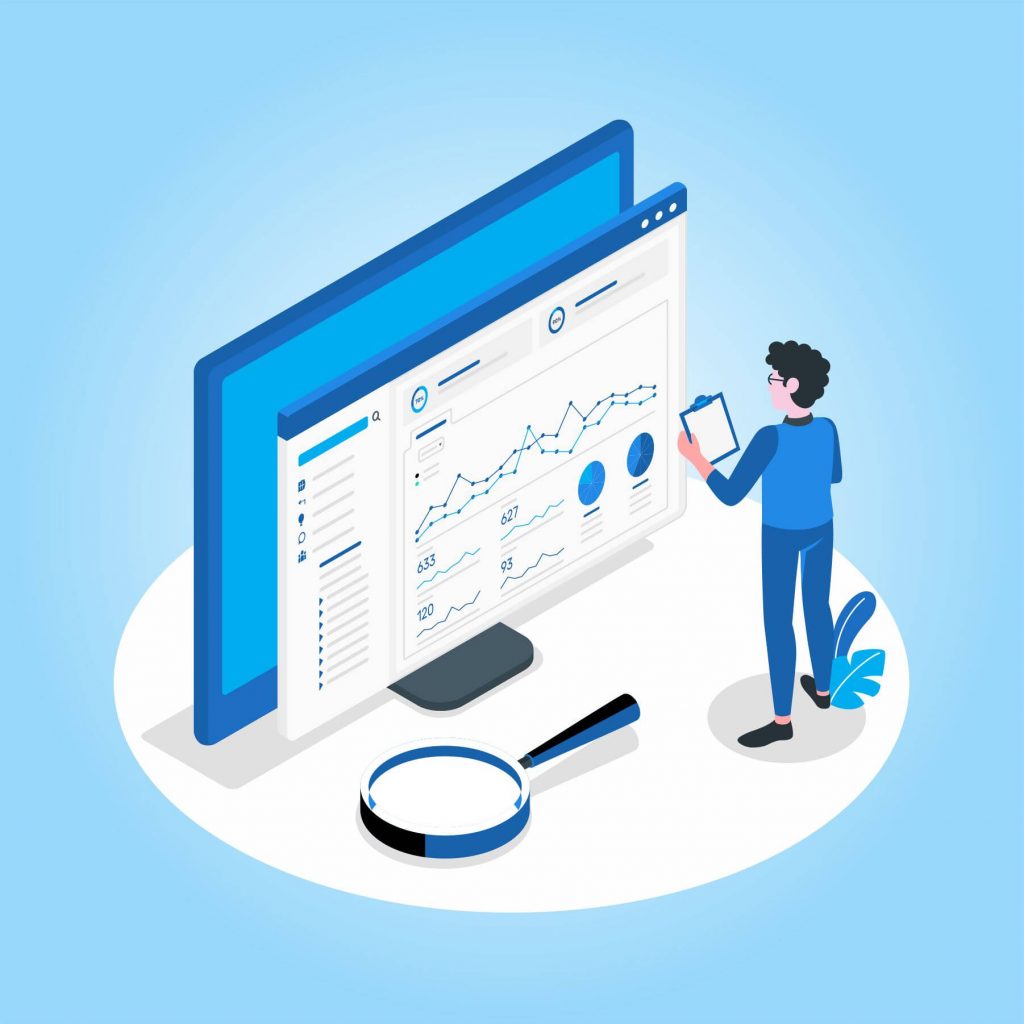Data Analytics and Visualization Dashboard Development: How to choose the right metrics?

In the world of the cut-throat competitive world, businesses that have discovered the mantra of effective information and data management will only prosper. Though the job is wearisome, it is imperative. Thanks to technology that has to reduce the complexities in information & data management by granting businesses a tool like a dashboard.
Dashboard, a product of high-end technology, helps businesses to gain an in-depth understanding of metrics and crucial information while leveraging the power of decision-making. The effective use of a data analytics & visualization dashboard has a certain impact on business productivity, ROI, and maximum use of in-hand data. However, this can only be accomplished if the at-service dashboard is purpose build and have the right metrics.
In this post, we will cover details like what is data analytics and visualization dashboard development, the advantages of using one, ways to pick key metrics, etc.
Understanding the Meaning of Dashboards for Businesses
Before we delve deep into details, let’s learn about dashboard meaning. Designed to provide a super-quick (and yet detailed) view of key performance indicators of a given business ecosystem, a dashboard is a business intelligence and information tool. It is like a comprehensive snapshot of a business representing all the quintessential information.
Its nature is dynamic, and its job is to keep pivotal and result-oriented information at a one-click away. By sorting out all the collected information, a dashboard leverages the information management job at multiple levels.
There are versatile kinds of dashboard, and each one suffices a particular purpose.
Our prime focus is on data analytics and visualization dashboard development. This variety of dashboard is a reporting tool capable of recording, tracking, assessing, evaluate, and display the KPIs along with data points.
It can concoct a large volume of data in the blink of an eye in order to predict market trends, find out insights, and design a business strategy. To represent the analyzed data, it uses means like pie charts, graphs, tables, gauges, and other graphical representation devices.
The advanced BI features, e.g., drill-down and ad-hoc querying, are distinctive traits of a data analytics and visualization dashboard. You may take the example of the MRR/Accounts dashboards to understand their concept well, as it is a lightweight version of an analytical dashboard.
The Edge of Using Data Analytics and Visualization Dashboard Development
Out of all the BI tools, the dashboard has garner special importance when leveraged data management.
More and more growth-specific businesses are using it. The current market trends are enough to prove it. In 2017, the market value of dashboard software was calculated to USD 2,296 million.
This number is likely to touch the mark of USD 5,843 million by the end of 2026, with a CAGR of around 11.03% between 2018 and 2026. This growth is not baseless. Using it renders numerous benefits. Here is a quick overview of them.
Displays Multiple Information at Once
Depending upon the size of the organization, there could be a huge pile of information to analyze and assess. If driving results from this information is the goal, it is crucial to have a clear display of it.
A data analytics and visualization dashboard development make this attainable. One can have a bird-eye view of data from multiple platforms at a centralized location. This kind of data representation enables a business to understand data meaning, its best use-case scenarios, and areas of improvement.
Understanding Data is an Easy Job
Data is the money in today’s world. However, it can only weave success when it is utilized in the best achievable ways. The users of data analytics and visualization dashboard can accomplish this task effortlessly as it uses means like pie charts, tables, and spreadsheets to display the data. Such uncomplicated data representation lets a business grasp what a distinct data set represents.
Heightens Data Accessibility and Collaboration
By rendering information in a centralized place, the dashboard allows teams to collaborative extensively and effortlessly. The cloud-based dashboard takes the collaboration to a whole new level as every bit of information is available on the cloud and can be accessed using any browser.
It keeps every team member on the same page and makes information exchange within and outside an organization easy.
Expeditious and Insightful Reports
Though generating reports is a crucial job, the high time consumption and demanded perfection has made it an exhausting job. The dashboard is bliss at this aspect as it auto apprehends the data and updates it in real-time. Leaders don’t have to wait much to have insightful reports.
Owning Growth-specific Dashboard and Choosing Right Metrics
While the benefits of using a dashboard are impressive, they can only be yielded out if the data analytics and visualization dashboard is built with perfection. A poorly constructed dashboard with insufficient metrics will fail big time to suffice its purpose.
Choosing the right metrics is as crucial as owning a dashboard. Tracking wrong or inapt metrics is like tracking nothing. Here is how one should choose the right metrics:
- Most of the metrics are used to identify problems and performance measurement—choose your metrics based upon your goal.
- Develop a framework and proceed accordingly. Ideal metrics to use in a dashboard are the one which can be tracked down easily, are essential, and can be explained easily. It is called as TIE framework.
- Ditch the self-serving metrics. Metrics that only look good and fail to provide in-depth details are not good to incorporate.
- Common interpretation, actionable, accessible & credible data, and transparent calculations are the metric’s four dimensions. Ensure that all these dimensions are well balanced in a dashboard.
Things to Avoid During a Dashboard Development
- Using too many widgets at a time
- Putting out basic questions like “What is the total sales?” in the layout
- Adding tables at the bottom of the dashboard
- Skipping automating the data feeds
Before We Wrap It Up
Data analytics and visualization dashboard is a success-driving tool designed with an aim to utilize the available data in its full capacity. This tool is here to simplify every operational front, from providing detailed insights into the data warehouse to effortless reporting.
It is crucial to choose the right metrics and adhere to a diligent approach while developing a dashboard. Metrics that are actionable and can provide transparent insights are good to incorporate. If you are looking for a helping hand to build a one-of-a-kind data analytics and visualization tool, then we can help you with your project execution based on our expertise and experience, leverage our top-rated web application development services now.
Contact Us
We’d Love to Help You
Get in Touch
- Fill out a request form. Please brief your requirements in-detail. The more we know about your amazing idea, the better we will guide and assist you with project time and resources
- We’ll reach out to you on priority to discuss next steps in the meantime please check out our case studies and insights.
- We look forward to collaborating with you to bring your idea to the market sooner than the traditional route.
Related




